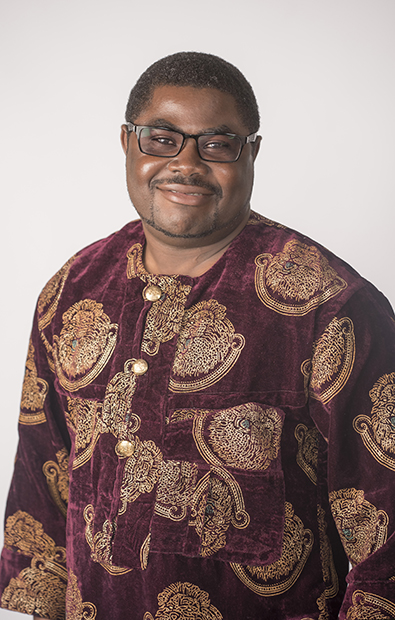 The first-ever TWAS-Mohammad A. Hamdan Award has been given to Abdon Atangana, a Cameroonian applied mathematician with the Institute for Groundwater Studies in Bloemfontein, South Africa. His mathematical findings — predictive equations called differential and integral operators — have found broad application in modelling across many fields for their ability to make more complicated predictions.
The first-ever TWAS-Mohammad A. Hamdan Award has been given to Abdon Atangana, a Cameroonian applied mathematician with the Institute for Groundwater Studies in Bloemfontein, South Africa. His mathematical findings — predictive equations called differential and integral operators — have found broad application in modelling across many fields for their ability to make more complicated predictions.
The award is named for TWAS’s late Vice President for the Arab Region, who passed away earlier this year. It’s given for outstanding mathematical work carried out by a scientist working and living in Africa or the Arab Region, with an award of USD 5,000, every two years. The award can be given for work in pure mathematics, applied mathematics, probability or statistics.
Atangana’s work developing predictive differential and integral operators apply to many fields of science, technology and engineering in which modelling is important. His operators and the resulting models can help predict the spread of infectious diseases among people in a settlement, including how many new people will be infected each day, how many will recover and how many will die.
They can also predict how groundwater flows in a complex geological formation, or how pollution could move within geological formations that contain water called aquifers. This helps water management agencies pump water from them without completely depleting them or inadvertently harming the population.
“You don’t know what is happening in the ground,” said Atangana. “If you don’t anticipate it, you will deplete the aquifer, so we rely on models to advise people who are drilling.”
At the center of Atangana’s work are the Atangana-Baleanu fractional differential and integral operators, which are named after him. They are able to describe not just the rate at which something will change, but “crossover effects” that might interfere with and modify that rate of change. He used an example of a plane ride from one location to another: You can predict how long a trip might take from Point A to Point B, but hazardous weather might interfere with the speed of the trip in unpredictable ways. His concept helps models account for such disrupting factors and produce better projections.
These models can even predict the change happening in tension between certain kinds of prey and predator and nature, identifying species whose numbers are at risk of depleting rapidly.
Atangana’s rate of citation has stood out in recent years. In 2017, he had the most cited study in the world in mathematics, signaling that his equation and mathematical work was useful to a broad range of modelers and other mathematicians. In 2019, he was named as one of the world highly cited mathematicians and one of the top 1% of scientists on the global Clarivate Web of Science list. In 2020, he was named as one of the world highly cited mathematicians with cross-field influence. He has been invited and attended more than 25 international conferences as keynote speaker, plenary speaker and invited speaker.
Atangana came from humble beginnings, in a single-parent home in a small village, travelling long distances to high school, and then university, by foot. And still now, he says African researchers receive little support.
“There are lots of people with potential to become brilliant, but they’re lost because they cannot last through the hardship and need support,” he said. “They need support or else you have no choice but to go back to your village and till the soil.”
He said he hopes to help African youths become inspired to enter science by building a stronger scientific legacy on the continent for them to be proud of Africa, he noted, only produces 0.02% of the world’s scientific publications, and he’s hoping his work and career can help propel science on the continent to a brighter future and awaken the potential for scientific aptitude in Africa to flourish.
“I would like an African child to proudly say that this formula was created by an African, because it’s the only way we can bring a little bit of balance,” he said.
Sean Treacy

